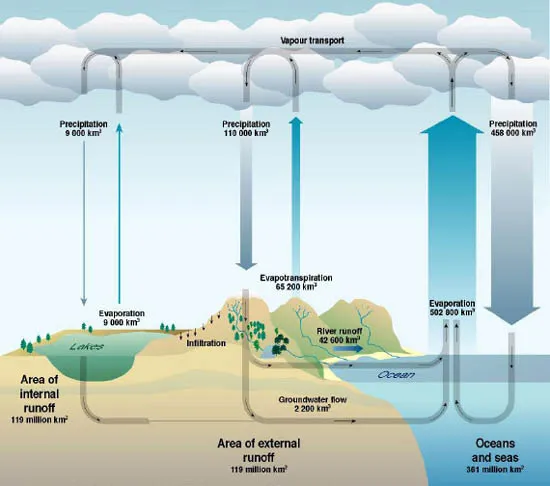
Bridges Over Water
Understanding Transboundary Water Conflict, Negotiation and Cooperation
- 432 pages
- English
- ePUB (mobile friendly)
- Available on iOS & Android
Bridges Over Water
Understanding Transboundary Water Conflict, Negotiation and Cooperation
About this book
Bridges over Water places the study of transboundary water conflicts, negotiation, and cooperation in the context of various disciplines, such as international relations, international law, international negotiations, and economics. It demonstrates their application, using various quantitative approaches, such as river basin modeling, quantitative negotiation theory, and game theory. Case-studies of particular transboundary river basins, lakes, and aquifers are also considered.
This second edition updates the literature on international water and in-depth analyses on political developments and cooperation between riparian states. With an appended chapter on principles and practices of negotiation, and a new case study on the La Plata Basin, this edition is a timely update to the field of transboundary water studies.
Contents:
- Introduction: State of Water and Interstate Water Relations
- Overview of Literature on Conflict Negotiation and Cooperation Over Shared Waters
- The Development and Application of International Water Law
- Principles and Practices of Cooperation in Managing International Water
- Cooperative Game Theory and Water Resources: Principles
- Cooperative Game Theory and Water Resources: Application of Solution Concepts
- Principles and Practices of Negotiation: A Quantitative Approach
- Hydropolitics and International Relations
- An Overview of Selected International Water Treaties in Their Geographic and Political Contexts
- Global Analysis of International Water Agreements
- The Use of River Basin Modeling as a Tool to Assess Conflict and Potential Cooperation
- Conclusion
- Case Studies:
- The Mekong River Basin
- The Ganges Basin (With Focus on India and Bangledesh)
- The Indus River Basin
- The Aral Sea Basin
- The La Plata River Basin
- Annexes:
- The Generica: An Outline for Preparing a Basin Case Study
- River Basin Cooperative Game Theory Example
Readership: Graduates in economics, engineering, water law, international relations and practitioners in water resource management, international water law and water policies.
Frequently asked questions
- Essential is ideal for learners and professionals who enjoy exploring a wide range of subjects. Access the Essential Library with 800,000+ trusted titles and best-sellers across business, personal growth, and the humanities. Includes unlimited reading time and Standard Read Aloud voice.
- Complete: Perfect for advanced learners and researchers needing full, unrestricted access. Unlock 1.4M+ books across hundreds of subjects, including academic and specialized titles. The Complete Plan also includes advanced features like Premium Read Aloud and Research Assistant.
Please note we cannot support devices running on iOS 13 and Android 7 or earlier. Learn more about using the app.
Information


Region | Residential | Industry | Agriculture |
Africa | 7 | 5 | 88 |
Europe | 14 | 55 | 31 |
North America | 13 | 47 | 49 |
Central America | 6 | 8 | 86 |
South America | 18 | 23 | 59 |
Asia | 6 | 9 | 85 |
Oceania | 64 | 2 | 34 |
Table of contents
- COVER
- HALFTITLE
- TITLE
- COPYRIGHT
- PREFACE TO THE SECOND EDITION
- PREFACE TO THE FIRST EDITION
- GUIDE TO SUPPLEMENTARY
- ACKNOWLEDGMENTS
- CONTENTS
- 1. INTRODUCTION: STATE OF WATER AND INTERSTATE WATER RELATIONS
- 2. OVERVIEW OF LITERATURE ON CONFLICT NEGOTIATION AND COOPERATION OVER SHARED WATERS
- 3. THE DEVELOPMENT AND APPLICATION OF INTERNATIONAL WATER LAW
- 4. PRINCIPLES AND PRACTICES OF COOPERATION IN MANAGING INTERNATIONAL WATER
- 5. COOPERATIVE GAME THEORY AND WATER RESOURCES: PRINCIPLES
- 6. COOPERATIVE GAME THEORY AND WATER RESOURCES: APPLICATION OF SOLUTION CONCEPTS
- 7. PRINCIPLES AND PRACTICES OF NEGOTIATION: A QUANTITATIVE APPROACH
- 8. HYDROPOLITICS AND INTERNATIONAL RELATIONS
- 9. AN OVERVIEW OF SELECTED INTERNATIONAL WATER TREATIES IN THEIR GEOGRAPHIC AND POLITICAL CONTEXTS
- 10. GLOBAL ANALYSIS OF INTERNATIONAL WATER AGREEMENTS
- 11. THE USE OF RIVER BASIN MODELING AS A TOOL TO ASSESS CONFLICT AND POTENTIAL COOPERATION
- 12. CONCLUSION
- CASE STUDY 1: THE MEKONG RIVER BASIN
- CASE STUDY 2: THE GANGES BASIN (WITH FOCUS ON INDIA AND BANGLADESH)
- CASE STUDY 3: THE INDUS RIVER BASIN
- CASE STUDY 4: THE ARAL SEA BASIN
- CASE STUDY 5: THE LA PLATA BASIN
- ANNEX 1: THE GENERICA: AN OUTLINE FOR PREPARING A BASIN CASE STUDY
- ANNEX 2: RIVER BASIN COOPERATIVE GAME THEORY EXAMPLE
- INDEX